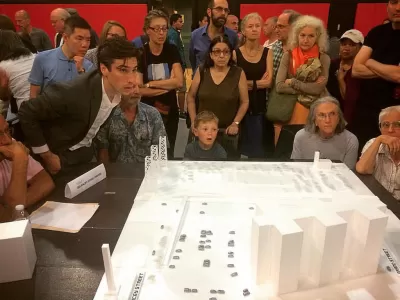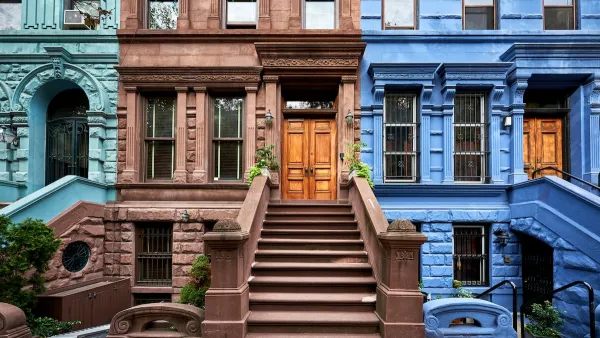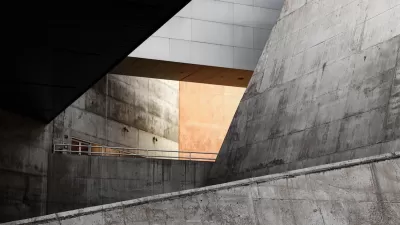Each year a lot of students ask me "how can I get a degree in urban design?". This is a very big question but in this blog I outline some key questions that those interested in urban design in planning need to consider.

Each year a lot of students ask me "how can I get a degree in urban design?" This is a very big question but in this blog I outline some key questions that those interested in urban design in planning need to consider.
The first question is the most important. What exactly do you mean by wanting to study urban design? Do you want to understand the area enough to be aware of major concepts and issues in urban design or do you want to have "urban designer" as your job title? You should read work by people like Jon Lang or Alex Krieger who have investigated the scope of urban design to decide. (And you can Google them but most of their work is only available in book and magazine form so you'll need to go to the library). The academic journals Urban Design International and the Journal of Urban Design are also good places to start. Places magazine can be a useful source as well.
The key issue is to determine if you are really interested in policy with a design angle or if you want to spend your days and nights actually drawing details of plazas. Perhaps you want to do something in between-maybe participatory work that considers design or work enhancing historic environments? Ask yourself if you are really just interested in the physical aspects of planning, something you can investigate with a mix of classes in land use, environmental planning, historic preservation, real estate, and urban design. Perhaps that isn't enough, and if so you may need a degree or a concentration in urban design.
If you are still an undergraduate I suggest getting a job and working for at least a year while you figure this out. You'll do lots better in grad school--with more experience, a better focus, and you'll likely get more money in scholarships too.
Once you've decided, the choices for graduate programs are quite varied to match the multiple motivations students might have for studying urban design.
- Many schools have an urban design specialty in planning. The ACSP guide lists literally scores of faculty with that specialization and many programs have two or more faculty with substantial expertise in the area: http://www.acsp.org/sites/default/files/2011_ACSP_Guide.pdf. The 2012 Planetizen guide lists over 40 planning programs claiming a specialty in urban design and five of these were highly rated by a "significant" number of respondents: Harvard, MIT, Berkeley, Penn, and the University of Washington. However, a number of other institutions have substantial urban design expertise including interesting dual degrees, substantial outreach centers, and good links to practicing professionals. It is worth looking at the longer lists in the ACSP and Planetizen guides as they may better fit your interests in vernacular environments or sustainable design.
- There are a few universities where you can do a degree labeled urban design (typically a MUD) without first having a degree in architecture or landscape architecture as a prerequisite. Examples of these kinds of degrees in North American schools that also have planning programs are at the University of Michigan, the University of Toronto, Ball State, Georgia Tech, and the University of Colorado. These are typically two to three semesters and many are aimed at people who already have a masters degree. (And it would be a service to the profession if someone listed any other programs offering such a degree in the comments section below).
- Many people who become urban designers JUST study landscape architecture (LA). Few LAs enroll in post-professional urban design programs (they are full of architects) because LAs learn urban design in their main degree. Of course landscape architects also need to learn to design gardens and do regional analyses so you would need to be prepared for that.
- Of course some people do an architecture degree and then a post-professional urban design qualification. A number of urban design degrees are specifically targeted at architects. But that's a very time-consuming strategy.
- You might also look at related specialties-for example historic preservation planning, land use and physical planning, infrastructure planning, or real estate.
Overall, the big question is what kind of urban designer do you want to be?
This is my April blog a little late.

Planetizen Federal Action Tracker
A weekly monitor of how Trump’s orders and actions are impacting planners and planning in America.

Maui's Vacation Rental Debate Turns Ugly
Verbal attacks, misinformation campaigns and fistfights plague a high-stakes debate to convert thousands of vacation rentals into long-term housing.

San Francisco Suspends Traffic Calming Amidst Record Deaths
Citing “a challenging fiscal landscape,” the city will cease the program on the heels of 42 traffic deaths, including 24 pedestrians.

Amtrak Rolls Out New Orleans to Alabama “Mardi Gras” Train
The new service will operate morning and evening departures between Mobile and New Orleans.

The Subversive Car-Free Guide to Trump's Great American Road Trip
Car-free ways to access Chicagoland’s best tourist attractions.

San Antonio and Austin are Fusing Into one Massive Megaregion
The region spanning the two central Texas cities is growing fast, posing challenges for local infrastructure and water supplies.
Urban Design for Planners 1: Software Tools
This six-course series explores essential urban design concepts using open source software and equips planners with the tools they need to participate fully in the urban design process.
Planning for Universal Design
Learn the tools for implementing Universal Design in planning regulations.
Heyer Gruel & Associates PA
JM Goldson LLC
Custer County Colorado
City of Camden Redevelopment Agency
City of Astoria
Transportation Research & Education Center (TREC) at Portland State University
Jefferson Parish Government
Camden Redevelopment Agency
City of Claremont






























